Books by Elisa Guerra Doce
From 22nd to 27th May 2023 the Cambridge Beer Festival will be held after a three-year hiatus. Or... more From 22nd to 27th May 2023 the Cambridge Beer Festival will be held after a three-year hiatus. Organised by the Campaign for Real Ale (CAMRA), it is the UK'slongest running and one of the largest regional beer festivals, featuring a widerange of local and national beers of all styles.
The Digital Lab, a digital engagement project at the Museum of Archaeology andAnthropology and the McDonald Institute for Archaeological Research wish tojoin in with the cheerful mood of the city hosting an interdisciplinary seminarthat will explore beer brewing in the past.
The presentations and discussions at this half-day conference will centre aroundbeer, its long history, and its importance in past societies. The event will concludewith a beer tasting session.
Origen. Cuadernos Atapuerca, 14, 2020
Desde los tiempos prehistóricos y prácticamente a lo largo y ancho de la geografía mundial, los s... more Desde los tiempos prehistóricos y prácticamente a lo largo y ancho de la geografía mundial, los seres humanos han alterado temporalmente su estado de consciencia con fines religiosos, terapéuticos, adivinatorios, recreativos e incluso bélicos. Para ello se ha recurrido a diversos procedimientos, solos o en combinación, como el ejercicio físico
violento, la meditación, el ayuno, la vigilia prolongada, la privación sensorial, o técnicas de respiración controlada, entre otros, pero uno de los más extendidos es el consumo de drogas. ¿Cómo, cuándo y por qué nuestros antepasados más remotos se iniciaron en el uso de estas sustancias?
ISBN 978 1 78491 307 6 ISBN 978 1 78491 308 3 (e-Pdf)
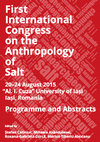
by Marius Alexianu, Mihaela Asăndulesei, Valentin Arapu, Andrei Emilciuc, Martin Hees, Argelia del Carmen Montes Villalpando, Mădălina Necula, Tamara Montalvo-Arce, Edoardo Vanni, Sorin Stratulat, Mera Ovidiu, Konrad A. Antczak, Oriol Beltran, Robin Brigand, Neculai Bolohan, Blas Román Castellón Huerta, Cavruc (Kavruk) Valeriu (Valerii), Jorge A. Ceja Acosta, Franck Derrien, Maciej Dębiec, Diaconu Vasile, Ashley A Dumas, Alfons Fíguls Alonso, Mircea-Cristian Ghenghea, Elisa Guerra Doce, Catherine Liot, Ileana Oana Macari, Nuria Morere, Ivana Pandzic, Razvan Victor Pantelimon, Alex Popa, Gustavo Ramirez, alfonso stiglitz, Felix-Adrian Tencariu, Edoardo Vanni, Olivier Weller, Igor Lyman, Victoria Konstantinova, Iuri (Gheorghe) Simionca, Tasha Maroulis, Rosa Maria Lanaspa, and Coralie GRADEL Common salt (sodium chloride) is an invisible object for archaeological research, but the ancient... more Common salt (sodium chloride) is an invisible object for archaeological research, but the ancient texts, the history, the ethnography and our everyday life confirm that both Man and Animal cannot live without it. Salt is a primordial reference for humanity. This “fifth element” is universal in a double sense, diachronically and diatopically. How can archaeology and related disciplines or sciences approximate this soluble good, this “white gold”, this invisible past?
From the diatopic and diachronic perspective, common salt—with all its natural or artificial metamorphoses—has influenced humanity in the most diverse aspects. This is why, within a brief enumeration, the salt-related research themes are intriguingly various: explorations (hunting for salt), exploitation techniques, techniques to obtain different products, exploitation and use tools, transport and storage containers, human and animal feeding, conservation (meat, bacon, cheese, vegetables, green goods, fruits). The themes also include manufacture-related uses (including the construction of salt houses), mythology, religion, cult, rituals, beliefs, superstitions, mentalities, secret societies, magic, vows, curses, prohibitions, popular medicine, sexuality, economy, hide working, population, alchemical procedures, scientific and cultural representations, treatment of the deceased, barter, commerce, contraband, robbery.
On the other hand, the themes also include human and animal mobility, the attraction exerted on savage beasts, symbolic uses, folk literature (stories, tales, and proverbs) and cult literature, the control of salt resources, conflicts, strategic value, geographic perceptions, professions related to salt exploitation and uses, economic, legal and administrative regulations, vocabulary, toponymy, anthroponomy and the list can go on.
All these themes already constitute a study object for an impressive number of sciences, disciplines, or sub-disciplines, such as archaeology, heritage studies, history, ethnography, ethnoarchaeology, economic anthropology, food sciences, statistics, sociology, geology, mineralogy, geography, hydrology, botany, chemistry, medicine, pharmacology, ethology, theology, agronomy, symbology, linguistics, folklore studies, cultural studies, literary studies, hermeneutics, legal sciences, etc. Obviously, some themes must be approached only in an interdisciplinary vision.
No está permitida la reproducción total o parcial de este libro, ni su tratamiento informático, n... more No está permitida la reproducción total o parcial de este libro, ni su tratamiento informático, ni la transmisión de ninguna forma o por cualquier medio, ya sea electrónico, mecánico, por fotocopia, por registro u otros métodos, ni su préstamo, alquiler o cualquier otra forma de cesión de uso del ejemplar, sin el permiso previo y por escrito de los titulares del Copyright. LOS AUTORES. Valladolid, 2014 EDICIONES UNIVERSIDAD DE VALLADOLID Preimpresión: Ediciones Universidad de Valladolid
Papers by Elisa Guerra Doce
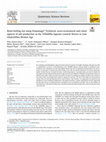
Quaternary Science Reviews, 2024
By combining a multidisciplinary approach and an intensive program of scientific techniques, this... more By combining a multidisciplinary approach and an intensive program of scientific techniques, this paper provides a comprehensive overview of salt production at the Villaf´afila lagoons (Zamora, Spain) in prehistoric times. During the Late Chalcolithic and the Early/Middle Bronze Age salt was obtained by boiling brine from salt lagoons. In many parts of western and central Europe at the time the standard procedure for forcing evaporation usually involved the use of crudely fired clay vessels (briquetage) to concentrate brine, and then to mould salt. We suggest that the methods during the final stages of the process differed at Villaf´afila, having found evidence of basketry and textiles, which may have been used in the step of crystallization/transport of salt in cake, instead of the small ceramic salt moulds which would be expected in such sites. The role of salt within the socioeconomic setting of the 3rd and 2nd millennia BCE in Central Iberia is also assessed. It is argued that the production and distribution of salt contributed significantly to the political economy, as elites controlled this activity, supporting the idea that salt was a prestige good that contributed to the accumulation of wealth. There is also evidence of ritual practices in the salt-processing areas, as human burials and animal sacrifices have been documented in the excavated sites.

III Congreso Internacional de Antropología de la Sal, 2022
Anthropology of salt: holistic view, saturated model (Romania). Alexianu, Marius-Tiberiu 4. Repre... more Anthropology of salt: holistic view, saturated model (Romania). Alexianu, Marius-Tiberiu 4. Representations of salt in historical cartography-heritage and environmental strategies-The Portuguese cadastre since 18 th century (Portugal). Inês Amorin 5. Salt and the diffusion of the Cucuteni culture in Southeastern Transylvania-The Ariușd cultural group (Romania). Andrei Asăndulesei, Codrin Gabriel Alexianu, Ștefan Caliniuc 6. Romanian toponymy of salt in Eastern Transylvania (Romania). Mihaela Asăndulesei 7. Las salineras de Maras en el contexto de la economía patrimonial: sistemas tradicionales de producción de sal y usos turísticos (Cusco, Perú). Oriol Beltrán 8. Gallerias: Qanat Karez irrigation systems as the original purpose built salt leaching ancient technology specifically designed for use in endorheic sabkha basins (Israel). David Bloch 9. Recent insights regarding salt sources: a case study in Northern Moldavia (Romania). Neculai Bolohan, Dănuț Vasile Mutescu 10. The Lion Salt Works : The Role of a Charitable Trust in a Complex Restoration Project (England). Martin P.

Boletín del Museo Chileno de Arte Precolombino, 2023
Este trabajo reúne una serie de reflexiones y propuestas interpretativas acerca de determinadas m... more Este trabajo reúne una serie de reflexiones y propuestas interpretativas acerca de determinadas manifestaciones artísticas postpaleolíticas de la Península Ibérica. Se plantea la hipótesis de que algunas expresiones gráficas del Neolítico y la Edad del Cobre plasmadas en paneles rupestres y en diversos soportes muebles pudieran haberse inspirado en estados de trance, al combinarse una serie de variables, entre las cuales destaca la presencia de posibles motivos entópticos y escenas chamánicas en la iconografía. Además, apoyándonos en el registro arqueobotánico, se valora el papel de las plantas psicoactivas en las prácticas de alteración de la consciencia desde el Neolítico Antiguo (ca. mediados del VI milenio cal AC). Lo anterior se relaciona con los profundos cambios en las estructuras socioeconómicas e ideológicas de las comunidades de la prehistoria reciente peninsular, como resultado de la adopción de la economía de producción durante el Neolítico y de la progresiva intensificación de las diferencias sociales que se percibe en el registro arqueológico a partir de entonces.
Scientific Reports, 2023
Human hair dated to Late Prehistory is exceedingly rare in the Western Mediterranean. Archaeologi... more Human hair dated to Late Prehistory is exceedingly rare in the Western Mediterranean. Archaeological excavations in the Bronze Age burial and cult cave of Es Càrritx, in Menorca (Balearic Islands) provided some human hair strands involved in a singular funerary rite. This finding offered the opportunity to explore the possible use of drug plants by Late Bronze Age people. Here we show the results of the chemical analyses of a sample of such hair using Ultra-High-Performance Liquid Chromatography-High Resolution Mass Spectrometry (UHPLC-HRMS). The alkaloids ephedrine, atropine and scopolamine were detected, and their concentrations estimated. These results confirm the use of different alkaloidbearing plants by local communities of this Western Mediterranean island by the beginning of the first millennium cal BCE.
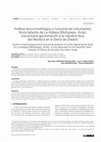
Munibe, 2022
RESUMEN Se presentan los resultados del estudio tecno-morfológico y traceológico realizado sobre ... more RESUMEN Se presentan los resultados del estudio tecno-morfológico y traceológico realizado sobre un conjunto de piezas líticas talladas de la ocupación neolítica de La Atalaya (Muñopepe, Ávila). Este trabajo constituye la primera caracterización del utillaje lítico tallado de las más tempranas comunidades productoras del valle Amblés, un espacio localizado en las estribaciones septentrionales de la Sierra de Gredos
para el que apenas existen datos al respecto. La información aportada ha permitido atisbar algunas de las actividades económicas de sus ocupantes, entre las cuales destaca la caza, mientras que las relacionadas con las tareas agrícolas tienen una menor representación.
ABSTRACT. The results of the techno-morphological and traceological or use-wear analysis carried out on a Neolithic collection of knapped stone objects from the prehistoric site of La Atalaya (Muñopepe, Avila) are presented. This study is the first morphological and functional characterization of the lithic industries of the earliest farming groups in the Amblés Valley, on the northern slopes of Sierra de Gredos mountain range. The determination of the functionality of the lithic assemblage has shed some light on the economic activities of the Neolithic groups. While hunting is well documented, agricultural practices are of lesser importance.
Paisaje y ritual: reflexiones sobre el contexto social del Arte Macroesquemático
Actas Del Congreso De Arte Rupestre En La Espana Mediterranea Alicante 25 28 De Octubre De 2004 2005 Isbn 84 7784 483 6 Pags 89 98, 2005
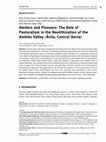
Open Archaeology, 2021
In recent years, the notion of landscape learning has been the object of increasing attention whe... more In recent years, the notion of landscape learning has been the object of increasing attention when discussing the neolithization of Europe. The landscape learning model stresses the necessity of gathering environmental information about a previously unfamiliar region. Therefore, it is particularly relevant in cases where the beginning of a farming economy is better explained in relation to the movements of peoples (colonization), rather than to the adoption of crops and livestock by pre-existing hunters and gatherers (acculturation). Unlike other Iberian regions, where the adoption of agriculture runs parallel to that of animal husbandry, the available data on the neolithization process of the Sierra de Gredos mountain range seem to suggest that raising livestock may have preceded plant cultivation. Based on an interdisciplinary and multi-proxy approach, this paper explores the idea that the adoption of a food-producing economy in the Amblés Valley (Ávila, Central Iberia) may have been connected with pastoralism. In this context, landscape learning provides a model for analyzing how Early Neolithic herders in their seasonal movements were capable of wayfinding by memorizing spatial features that functioned as visual landmarks.
Drogas y rituales funerarios en el Neolítico europeo
Actas Del Iii Congreso Del Neolitico En La Peninsula Iberica Santander 5 a 8 De Octubre De 2003 2005 Isbn 84 8102 975 0 Pags 705 714, 2005
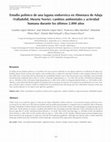
Revista Espanola De Micropaleontologia, 2009
El análisis de microfósiles polínicos y no polínicos de una secuencia obtenida en una laguna endo... more El análisis de microfósiles polínicos y no polínicos de una secuencia obtenida en una laguna endorreica en Almenara de Adaja (Valladolid, Meseta Norte) muestra este registro como sensible tanto a cambios de naturaleza climática como antrópica durante los últimos 2800 años. Se han detectado los momentos de variabilidad climática que se han descrito para esta cronología como el período frío del final de la Edad del Hierro (850-75 cal BC), el Período Cálido Romano (ca. 75 cal BC-300 cal AD), el Período Frío Altomedieval (ca. 300-800 cal AD), el Período Cálido Bajomedieval (ca. 800-1450 cal AD) y la Pequeña Edad del Hielo (ca. 1450-1800 cal AD). Además, se han observado distintos grados de antropización en el paisaje en relación con las pautas de asentamiento en la zona. Aunque es desde la época romana cuando se establecieron las transformaciones del paisaje que han conformado el paisaje actual, que está caracterizado por ser un espacio muy agrícola y ganadero.
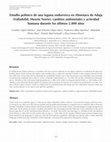
Revista Espanola De Micropaleontologia, 2009
El análisis de microfósiles polínicos y no polínicos de una secuencia obtenida en una laguna endo... more El análisis de microfósiles polínicos y no polínicos de una secuencia obtenida en una laguna endorreica en Almenara de Adaja (Valladolid, Meseta Norte) muestra este registro como sensible tanto a cambios de naturaleza climática como antrópica durante los últimos 2800 años. Se han detectado los momentos de variabilidad climática que se han descrito para esta cronología como el período frío del final de la Edad del Hierro (850-75 cal BC), el Período Cálido Romano (ca. 75 cal BC-300 cal AD), el Período Frío Altomedieval (ca. 300-800 cal AD), el Período Cálido Bajomedieval (ca. 800-1450 cal AD) y la Pequeña Edad del Hielo (ca. 1450-1800 cal AD). Además, se han observado distintos grados de antropización en el paisaje en relación con las pautas de asentamiento en la zona. Aunque es desde la época romana cuando se establecieron las transformaciones del paisaje que han conformado el paisaje actual, que está caracterizado por ser un espacio muy agrícola y ganadero.
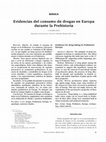
RESUMEN. Objetivo. Se estudia el consumo de drogas en la Prehistoria. Las primeras referencias es... more RESUMEN. Objetivo. Se estudia el consumo de drogas en la Prehistoria. Las primeras referencias escritas en este sentido se remontan al III milenio a.C., lo que implica un largo proceso de familiarización progresiva con estas sustancias que posiblemente se habría iniciado en la Prehistoria. Métodos. Para apoyar nuestra hipótesis nos vamos a servir de referencias a drogas vegetales en los textos de los autores grecolatinos y de evidencias arqueológicas. Entre estas últimas cabe destacar la recuperación de macrorrestos de vegetales psicoactivos en yacimientos prehistóricos, la presencia de alcaloides y metabolitos de drogas en diversos utensilios y restos esqueléticos, respectivamente, y las representaciones artísticas de plantas con estas propiedades. Resultados. Se ha podido documentar la presencia de vegetales con propiedades psicoactivas (efedra, adormidera, marihuana, miembros de las Solanaceae, cornezuelo de centeno, etc.) en varios yacimientos prehistóricos de Europa. No obstante, este hecho no siempre implica su empleo como drogas. Conclusiones. El consumo de drogas en Europa se inició en la Prehistoria, empleándose estas sustancias en la celebración de rituales y prácticas medicinales.






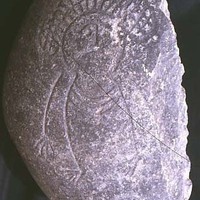

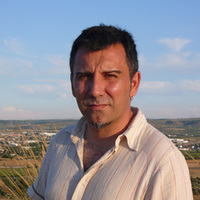
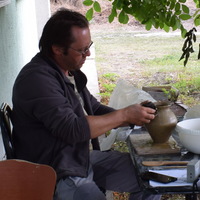
Uploads
Books by Elisa Guerra Doce
The Digital Lab, a digital engagement project at the Museum of Archaeology andAnthropology and the McDonald Institute for Archaeological Research wish tojoin in with the cheerful mood of the city hosting an interdisciplinary seminarthat will explore beer brewing in the past.
The presentations and discussions at this half-day conference will centre aroundbeer, its long history, and its importance in past societies. The event will concludewith a beer tasting session.
violento, la meditación, el ayuno, la vigilia prolongada, la privación sensorial, o técnicas de respiración controlada, entre otros, pero uno de los más extendidos es el consumo de drogas. ¿Cómo, cuándo y por qué nuestros antepasados más remotos se iniciaron en el uso de estas sustancias?
From the diatopic and diachronic perspective, common salt—with all its natural or artificial metamorphoses—has influenced humanity in the most diverse aspects. This is why, within a brief enumeration, the salt-related research themes are intriguingly various: explorations (hunting for salt), exploitation techniques, techniques to obtain different products, exploitation and use tools, transport and storage containers, human and animal feeding, conservation (meat, bacon, cheese, vegetables, green goods, fruits). The themes also include manufacture-related uses (including the construction of salt houses), mythology, religion, cult, rituals, beliefs, superstitions, mentalities, secret societies, magic, vows, curses, prohibitions, popular medicine, sexuality, economy, hide working, population, alchemical procedures, scientific and cultural representations, treatment of the deceased, barter, commerce, contraband, robbery.
On the other hand, the themes also include human and animal mobility, the attraction exerted on savage beasts, symbolic uses, folk literature (stories, tales, and proverbs) and cult literature, the control of salt resources, conflicts, strategic value, geographic perceptions, professions related to salt exploitation and uses, economic, legal and administrative regulations, vocabulary, toponymy, anthroponomy and the list can go on.
All these themes already constitute a study object for an impressive number of sciences, disciplines, or sub-disciplines, such as archaeology, heritage studies, history, ethnography, ethnoarchaeology, economic anthropology, food sciences, statistics, sociology, geology, mineralogy, geography, hydrology, botany, chemistry, medicine, pharmacology, ethology, theology, agronomy, symbology, linguistics, folklore studies, cultural studies, literary studies, hermeneutics, legal sciences, etc. Obviously, some themes must be approached only in an interdisciplinary vision.
Papers by Elisa Guerra Doce
para el que apenas existen datos al respecto. La información aportada ha permitido atisbar algunas de las actividades económicas de sus ocupantes, entre las cuales destaca la caza, mientras que las relacionadas con las tareas agrícolas tienen una menor representación.
ABSTRACT. The results of the techno-morphological and traceological or use-wear analysis carried out on a Neolithic collection of knapped stone objects from the prehistoric site of La Atalaya (Muñopepe, Avila) are presented. This study is the first morphological and functional characterization of the lithic industries of the earliest farming groups in the Amblés Valley, on the northern slopes of Sierra de Gredos mountain range. The determination of the functionality of the lithic assemblage has shed some light on the economic activities of the Neolithic groups. While hunting is well documented, agricultural practices are of lesser importance.
The Digital Lab, a digital engagement project at the Museum of Archaeology andAnthropology and the McDonald Institute for Archaeological Research wish tojoin in with the cheerful mood of the city hosting an interdisciplinary seminarthat will explore beer brewing in the past.
The presentations and discussions at this half-day conference will centre aroundbeer, its long history, and its importance in past societies. The event will concludewith a beer tasting session.
violento, la meditación, el ayuno, la vigilia prolongada, la privación sensorial, o técnicas de respiración controlada, entre otros, pero uno de los más extendidos es el consumo de drogas. ¿Cómo, cuándo y por qué nuestros antepasados más remotos se iniciaron en el uso de estas sustancias?
From the diatopic and diachronic perspective, common salt—with all its natural or artificial metamorphoses—has influenced humanity in the most diverse aspects. This is why, within a brief enumeration, the salt-related research themes are intriguingly various: explorations (hunting for salt), exploitation techniques, techniques to obtain different products, exploitation and use tools, transport and storage containers, human and animal feeding, conservation (meat, bacon, cheese, vegetables, green goods, fruits). The themes also include manufacture-related uses (including the construction of salt houses), mythology, religion, cult, rituals, beliefs, superstitions, mentalities, secret societies, magic, vows, curses, prohibitions, popular medicine, sexuality, economy, hide working, population, alchemical procedures, scientific and cultural representations, treatment of the deceased, barter, commerce, contraband, robbery.
On the other hand, the themes also include human and animal mobility, the attraction exerted on savage beasts, symbolic uses, folk literature (stories, tales, and proverbs) and cult literature, the control of salt resources, conflicts, strategic value, geographic perceptions, professions related to salt exploitation and uses, economic, legal and administrative regulations, vocabulary, toponymy, anthroponomy and the list can go on.
All these themes already constitute a study object for an impressive number of sciences, disciplines, or sub-disciplines, such as archaeology, heritage studies, history, ethnography, ethnoarchaeology, economic anthropology, food sciences, statistics, sociology, geology, mineralogy, geography, hydrology, botany, chemistry, medicine, pharmacology, ethology, theology, agronomy, symbology, linguistics, folklore studies, cultural studies, literary studies, hermeneutics, legal sciences, etc. Obviously, some themes must be approached only in an interdisciplinary vision.
para el que apenas existen datos al respecto. La información aportada ha permitido atisbar algunas de las actividades económicas de sus ocupantes, entre las cuales destaca la caza, mientras que las relacionadas con las tareas agrícolas tienen una menor representación.
ABSTRACT. The results of the techno-morphological and traceological or use-wear analysis carried out on a Neolithic collection of knapped stone objects from the prehistoric site of La Atalaya (Muñopepe, Avila) are presented. This study is the first morphological and functional characterization of the lithic industries of the earliest farming groups in the Amblés Valley, on the northern slopes of Sierra de Gredos mountain range. The determination of the functionality of the lithic assemblage has shed some light on the economic activities of the Neolithic groups. While hunting is well documented, agricultural practices are of lesser importance.
During Late Prehistory adornments worked out of variscite are widely used as prestige items all over Europe. The archaeological record of centre-south-west Northern Spanish Meseta is an ideal case study to fully reconstruct the chaîné opératoire from 1. Mining at Aliste area (Palazuelo de las Cuevas and other nearby mines), 2. adornment manufacturing at the production locii of Quiruelas de Vidriales sites, 3. Adornment consumption in about 30 tombs and settlements from Late Neolithic to Copper Age in the nearby areas to the mining and manufacturing places. This paper analyses the technotypological features, scale and organisation of variscite adornment production patterns along time. Results allows to argue about a craft tradition born during the Late Neolithic that keep up its techno-tyopological features as grew up on intensity, concentration and most likely specialisation of the production during the Copper Age
From around 2750 to 2500 bc, Bell Beaker pottery became widespread across western and central Europe, before it disappeared between 2200 and 1800 bc. The forces that propelled its expansion are a matter of long-standing debate, and there is support for both cultural diffusion and migration having a role in this process. Here we present genome-wide data from 400 Neolithic, Copper Age and Bronze Age Europeans, including 226 individuals associated with Beaker-complex artefacts. We detected limited genetic affinity between Beaker-complex-associated individuals from Iberia and central Europe, and thus exclude migration as an important mechanism of spread between these two regions. However, migration had a key role in the further dissemination of the Beaker complex. We document this phenomenon most clearly in Britain, where the spread of the Beaker complex introduced high levels of steppe-related ancestry and was associated with the replacement of approximately 90% of Britain’s gene pool within a few hundred years, continuing the east-to-west expansion that had brought steppe-related ancestry into central and northern Europe over the previous centuries.
The Neolithisation process of the Spanish Northern subplateau was thought to have originated from the Culture of the Caves, identified by P. Bosch Gimpera at the beginning of the 20th century. In the last few decades, however, other cultural influences have also been noticed. In its southwestern area (the present-day provinces of Salamanca and Ávila), for instance, the material culture, settlement pattern, and economic system of the earliest Neolithic groups are similar to those of the first farming communities in Portugal. In this paper, the importance of the Portuguese connection in the Neolithisation process is highlighted, and potential routes and explanations behind the spread of the farming economy are assessed.
Among the mechanisms that Beaker individuals might have drawn upon by the mid-3rd millennium cal BC in order to attain wealth and power, and consequently acquire a social position, Iberian Beaker groups might have assumed control over the production and circulation of salt. This paper is aimed at further exploring this issue, and assessing the possible link between the origin of the Beaker phenomenon, or, more specifically, the Maritime Beaker pots, and the production of salt in the Portuguese Estremadura region.
Em termos estritos, o Campaniforme é a súmula de um estilo decorativo cerâmico com formas cerâmicas específicas. Surge em toda a Europa e Norte de África em finais do Calcolítico, na segunda metade do 3º milénio a.n.e. Contudo, em termos mais abrangentes, a presença desta cerâmica tem profundas implicações no estudo do modelo de sociedade, de eixos de troca e de mudanças tecnológicas das comunidades agro-pastoris.
A temática do Campaniforme tem um longo historial de investigações em toda a Europa. A quantidade e diversidade de campaniforme na Península Ibérica desde cedo levou a colocar esta área no centro de debate da origem e difusão de um estilo cerâmico.
Ciclicamente, têm sido efectuados balanços sobre esta temática, sobretudo a propósito de estudos monográficos de sítios com dados especialmente relevantes quanto à estratigrafia, cronologia absoluta, tipologia.
Apesar da extensão da bibliografia disponível, escasseiam as leituras transversais e actualizadas reflectindo as recentes descobertas das últimas décadas: os recintos de fossos, os hipogeus do interior da Península, as novas análises arqueométricas. Estes novos dados permitem colocar em perspectiva os contextos «clássicos», alguns dos quais com trabalhos arqueológicos do século 19.
O presente workshop constitui um encontro científico especificamente direcionado para a temática do campaniforme à escala peninsular, reunindo um conjunto selecionado de investigadores, com dados relevantes. Para além do conjunto de oradores convidados, será ainda aberta a inscrição para posters, alargando-se assim o leque de participações.
Procura-se fazer o levantamento do estado da arte e, simultaneamente, estimular a discussão das diferentes perspectivas teóricas.
12 a 13 de Maio.
http://www.uniarq.net/workshop-sinos-e-tacas.html